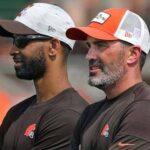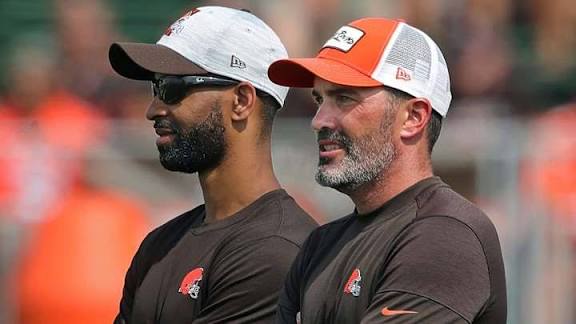
Tiger Woods has earned the right to do what he wants with his life, even if it requires one back surgery after another.
Tiger Woods can do just about anything he wants with his life.
If he wanted to do television, NBC and CBS would fight like cats to pay him millions to sit in the 18th-hole television tower.
If he wanted to run the PGA Tour, his fellow players would pay Commissioner Jay Monahan a buyout worth millions tomorrow and give Woods the title “king of all golf” if he asked for it.
If he wanted to captain the U.S. Ryder Cup team, Keegan Bradley would be an assistant captain in an instant. In fact, Woods was offered the captaincy for next year and turned it down.
Here’s the problem: Woods doesn’t want to do any of those things. He wants to be a golfer. Maybe — maybe — he has accepted the fact that he’ll never be Superman again, but he still wants to be competitive in major championships and occasionally on the PGA Tour.
Last week, Woods announced that he had yet another lower back surgery — that makes six in a decade, not to mention his surgery for a broken leg in 2008 and more surgery on his leg after his near-fatal car crash in 2021.
Since that wreck, he has played in eight of 16 majors. He has made two cuts (with his highest finish being 47th at the Masters in 2022), missed four cuts and withdrawn twice.
He’ll turn 49 in December, a difficult age for any player to remain competitive while waiting to hit the magic 50 and be able to play on the senior tour.
Woods is the only player who could have come back from all the surgeries he had before 2019 to win another Masters at 43. But it is difficult now for him to walk 72 holes, much less play at a high level. I believe he will play well on the senior tour, where most events allow players to use carts. If you believe for one minute that he won’t play on that tour, I have some Enron stock to sell you. Remember, Jack Nicklaus insisted he would never play the over-50 tour, then won eight majors there.
Golfers play golf. Tiger Woods is a golfer.
Earlier this year, Colin Montgomerie, who is in the World Golf Hall of Fame even though he never won a major, suggested Woods should retire because he can no longer seriously compete. Woods snapped back that at least he had earned the right to keep playing majors — he has won 15 of them.
The response tells you how much Woods wants to make one more comeback — at least.
In the end, this is simple: Woods should play for as long as he wants to play. The PGA Tour passed one of its silliest rules this year, saying that Woods — who has won on tour 82 times — has a lifetime exemption into any signature event he wishes to play, regardless of his status.
Seriously? Do you think for one second any tournament director on the planet — or any other planet — would deny Woods entry to an event? Maybe if the tour stopped trying to score public relations points and focused on fixing the LIV situation, golf would be in a better place.
What people like Montgomerie so often bring up when talking about Woods is legacy. They suggest he’s damaging his legacy by limping around golf courses and missing cuts or barely making them.
Wrong.
It is almost impossible for truly great athletes to walk away from what they’ve done — what they’ve been — for their whole lives. Nicklaus played his last British Open at 65, missed the cut comfortably but birdied the last hole at St. Andrews as his friend and fellow multiple-major winner Tom Watson stood on the green and wept.
Watson came with inches of winning the British Open at 59 — 13 years after his last tour victory.
I walked with Arnold Palmer in 1994 during his last U.S. Open round — he was 64 — and there wasn’t a dry eye to be seen. “Most sports I’d have been booed for the way I played,” he said. “How lucky have I been?”
How lucky were those of us who were there to watch him that day?
There are plenty of examples of athletes staying too long. My favorite baseball player as a kid, Willie Mays, once told me he never should have played for the New York Mets. But as a lifelong Mets fan, I was thrilled to see Mays in a Mets uniform, no matter how he played.
Johnny Unitas in San Diego? Tom Seaver in Boston? Michael Jordan in Washington? Jimmy Connors didn’t win the U.S. Open in 1991 when he was 39, but he made the semifinals — and many people remember him for that as much as his eight major titles. He played the next U.S. Open as well, losing in the second round.
None of those players’ legacies were affected by their over-the-hill adventures. They are — and always will be — all-time greats.
There is nothing that can change Woods’s legacy. He has had all kinds of off-course issues that are also part of his legacy, but his 2000-2001 “Tiger Slam” is untouchable. So are the years from 1997 to 2008, when the only thing that slowed him down was the broken leg he played through while winning the U.S. Open in 2008.
The end of a football career is different because brain injuries are uniquely serious and difficult to diagnose long-term. But oft-concussed Miami Dolphins quarterback Tua Tagovailoa is the same as Woods in this sense: He has to decide his future. It is not up to any of us to suggest what should come next for him.
In both cases, money is not a factor. Woods loves to play, and if he wants to continue, regardless of his level of play, that’s up to him. If seeing him play poorly is too painful for his loyal fans, they don’t have to watch.
Woods said last week he was looking forward “to tackling this rehab.” As someone who has been through a couple of rehabs, I find that hard to believe. But if another round of rehab and another uncertain return are what he wants to do, he should do it. He certainly has earned the right to do exactly what he wants with his life — whatever it may be.

